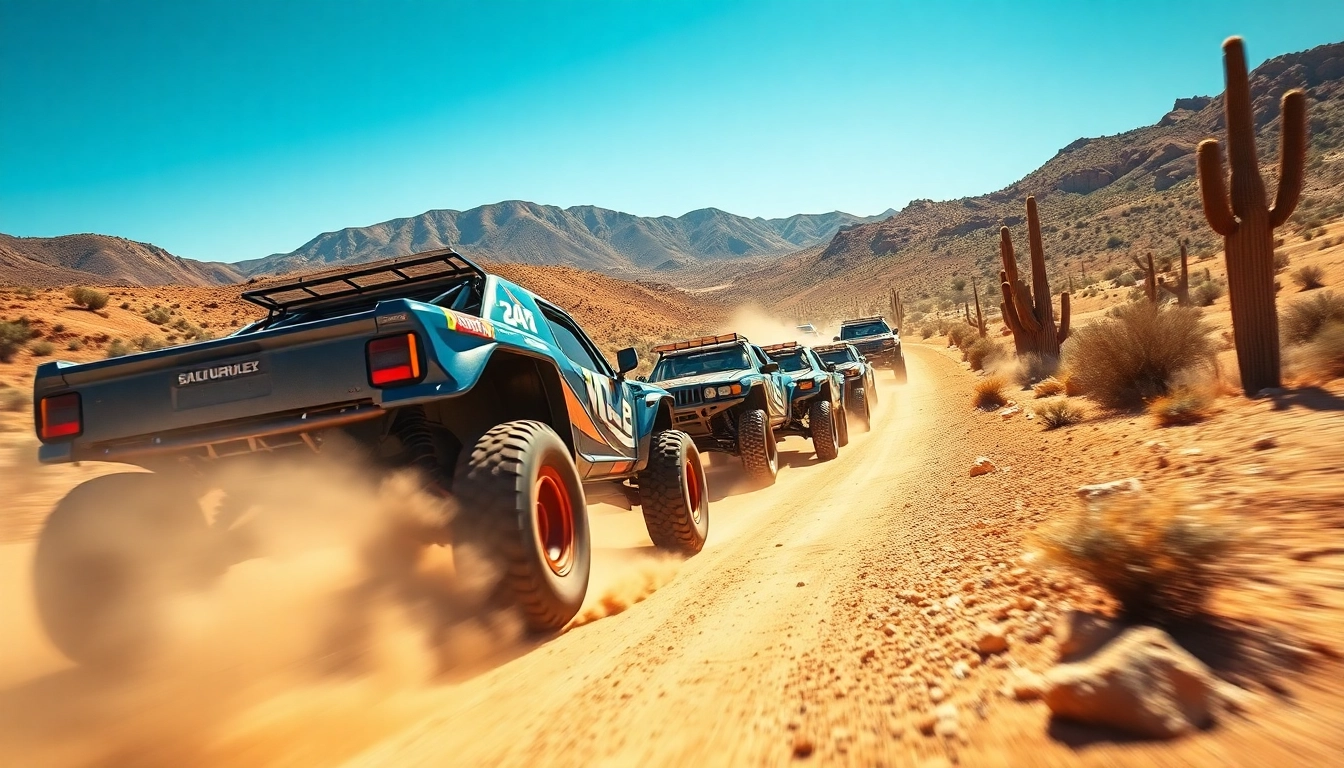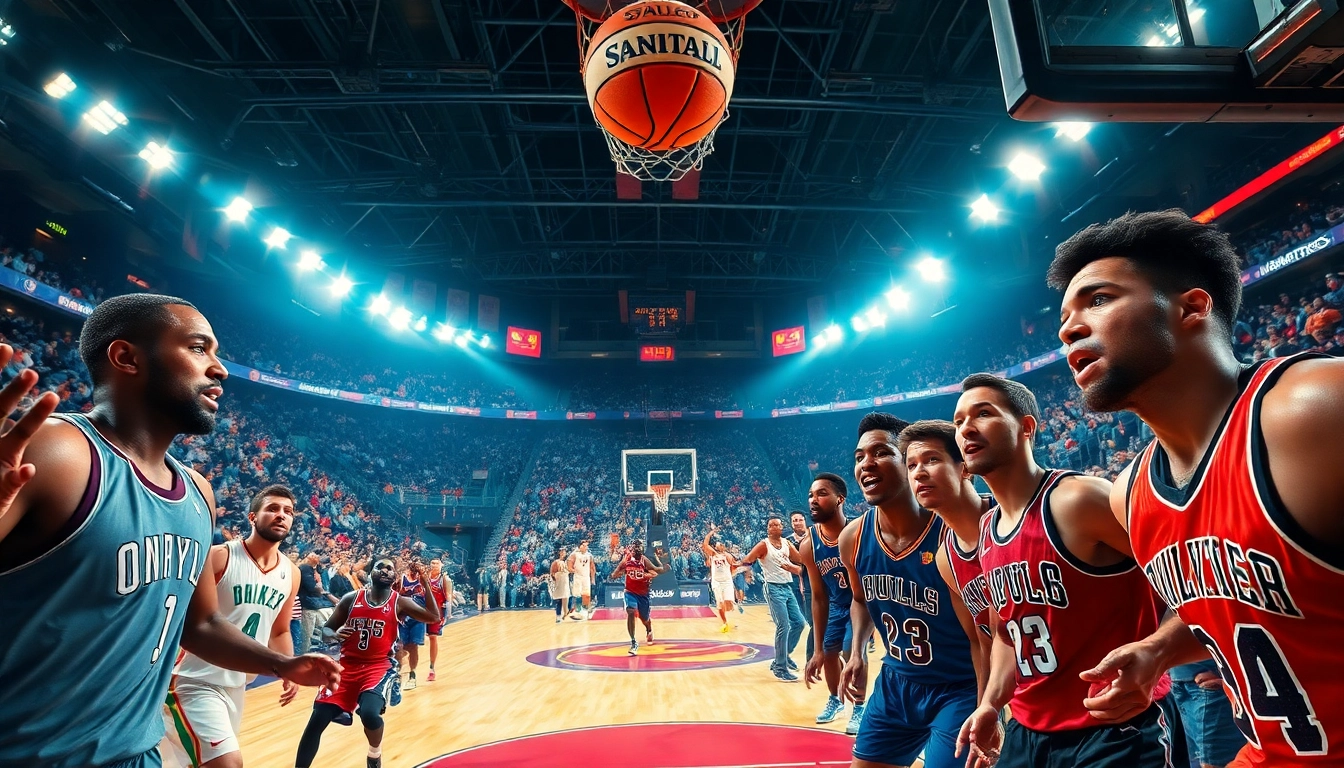The Allure of the Baja Race
The Baja race, a term synonymous with thrilling off-road adventure and high-octane competition, captivates motorsport aficionados and casual viewers alike. Held annually along the rugged terrains of the Baja California Peninsula, races such as the iconic Baja 1000 invoke a sense of challenge and excitement unparalleled in the world of motorsports. Baja race events attract participants and spectators from around the globe, drawn in by the fierce competition, stunning landscapes, and a deeply-rooted culture of off-road racing.
What Is the Baja Race?
The Baja race is primarily represented by prominent events like the Baja 1000 and Baja 500, organized under the aegis of SCORE International. These off-road races include various vehicle classes, from motorcycles to multitudes of four-wheeled machinery, including trophy trucks and buggies. Participants navigate through diverse terrains comprising deserts, mountains, and coastal regions, facing natural obstacles that test their speed and resilience. The Baja 1000, a hallmark event, stretches approximately 850 miles, though the exact course may vary annually, incorporating different routes and challenges that race teams must master.
History and Evolution of Baja Racing
The roots of Baja racing can be traced back to the 1960s when automotive enthusiasts sought daring venues for competitive driving. The first Baja 1000 took place in 1967 and was initially a simple off-road rally. Over the years, the Baja race has grown tremendously, both in terms of participation and global recognition. From humble beginnings with only a few dozen participants, it now draws hundreds of entrants each year, including professional race teams and amateur participants alike. Advances in vehicle technology and navigation systems, alongside the evolution of racing classes, have transformed the event into an elite motorsport competition.
Significance in Off-Road Motorsports
As one of the most celebrated off-road racing events globally, the Baja race holds a unique position in motorsport circles. It serves as a proving ground for automotive manufacturers, allowing them to showcase the durability and performance of their vehicles. It’s also a cultural phenomenon that unites adventurers, thrill-seekers, and athletes. The narrative of finishing against overwhelming odds resonates through generations, making the Baja not just a race but a legendary journey.
Vehicles That Conquer the Baja Race
Types of Vehicles: Trophy Trucks to Buggies
The Baja race features a wide array of vehicles, each tailored for different challenges posed by the rugged terrain. The most popular categories include:
- Trophy Trucks: These are the titans of the Baja race, engineered for speed and durability. With powerful engines and advanced suspension systems, they are designed to tackle both rough terrain and intense racing conditions.
- Class 1 Buggies: Lightweight yet incredibly skillful, these vehicles prioritize agility. They are known for their quick handling and can navigate through tight spots that may be challenging for heavier trucks.
- Motorcycles: Although more perilous, motorcycle racers are drawn to the thrill of competing in the open landscape with fewer mechanical advantages. They offer speed and maneuverability, allowing experienced riders to take on demanding paths.
- UTVs (Utility Task Vehicles): These vehicles have gained popularity in recent years for their balance of speed and terrain capability, making them perfect for recreational racing and amateur competitors.
Key Features of a Baja Race Vehicle
A successful Baja race vehicle must integrate several key features to conquer the unpredictable terrain:
- Sturdy Suspension: To handle jumps and rough landings, a reinforced suspension system is crucial. This feature allows vehicles to absorb shocks while maintaining control.
- Powerful Engine: Speed is essential, and thus, vehicles are often equipped with high-performance engines ranging from turbocharged V8s to innovative hybrid options.
- Tires: Specialized tires designed for maximum grip and durability on various surfaces are non-negotiable in off-road racing.
- Safety Equipment: Helmets, harnesses, and reinforced chassis are mandatory to protect drivers during intense race conditions.
Choosing the Right Vehicle for Your First Baja Race
For novices considering their debut in Baja racing, selecting the appropriate vehicle is paramount. Considerations should include:
- Experience Level: Entry-level vehicles such as UTVs or Class 11 cars are ideal for those new to Baja racing.
- Budget: Be realistic about the investment, from purchasing a vehicle to maintaining it throughout the race season.
- Mileage and Fuel Capacity: Choose a vehicle that can sustain long-distance travel without frequent refueling, as certain segments of the race may have limited access to fuel stations.
Preparing for the Baja Race
Essential Gear and Equipment
A successful Baja race experience hinges on thorough preparation which includes crucial gear and equipment beyond the vehicle itself:
- Navigational Tools: GPS devices, road maps, and navigation software are essential for critical course understanding and strategy development.
- Protective Gear: High-quality helmets, fire suits, gloves, and pads are vital for driver safety and compliance with racing regulations.
- Communication Devices: Radios to maintain contact with the pit crew and other racers enhance safety and efficiency during the race.
- Maintenance Supplies: Having essential parts and tools readily available can mean the difference between finishing and retiring mid-race.
Understanding the Racing Rules and Regulations
Familiarity with the rules and regulations defined by SCORE International is crucial for all competitors. These guidelines cover:
- Vehicle Specifications: Each class comes with specific requirements such as safety features and materials used in construction.
- Race Format: Knowledge of the start and finish procedure, along with penalties for rule violations, ensures smoother participation.
- Environmental Regulations: Given Baja’s stunning natural landscapes, competitors must adhere to specific environmental practices to minimize their impact.
Course Navigation and Strategy
Mastering course navigation is key to success in the Baja race, where racers often face unpredictable conditions. Strategic planning involves:
- Reconnaissance: Pre-race scouting of segments is essential. Understanding which parts of the course are technical vs. fast allows for better strategy development.
- Pit Stops: Efficient coordination during pit stops can save precious time. Teams should plan out regular maintenance checks along the route.
- Driver Changes: Ensure that the team has agreed upon when to change drivers to keep performance levels optimal across the race.
Upcoming Baja Races
2024 Baja Race Schedule
The 2024 Baja race calendar is packed with excitement, featuring various events that promise epic competition and entertainment. Key races include:
- Baja 1000: Scheduled for November 2024, this race marks the pinnacle of Baja competition.
- Baja 500: Taking place in June, this race is a vital mid-season test for competitors.
- Baja 250: Known for being shorter yet highly competitive, this event occurs earlier in the year, offering the chance for newcomers to participate.
Notable Teams and Drivers to Watch
With each season, teams and drivers emerge as front-runners in Baja racing. Notable figures in recent years include:
- Bryce Menzies: Known for his prowess in the Trophy Truck class, Menzies has become a household name in Baja racing.
- Rob MacCachren: A legend in the sport, MacCachren’s experience and skill continue to keep him competitive.
- Andy McMillin: Another formidable contender, McMillin brings racing expertise to his team, often finishing at the top ranks.
Events and Festivities Surrounding the Baja Races
The Baja races tend to be accompanied by vibrant events and festivities, which enhance the overall experience for fans and participants alike. Activities might include:
- Pre-Race Festivities: Leading up to the races, events showcase vehicles, provide merchandise, and promote local vendors.
- Post-Race Celebrations: Awards ceremonies recognize outstanding performances, uniting the community and closing out the racing season.
- Family Activities: Kid-friendly events, food festivals, and entertainment options make it appealing for spectators of all ages.
How to Get Involved in Baja Racing
Joining a Baja Racing Team
For aspiring competitors, joining an existing Baja racing team serves as an excellent entry point. Steps to consider include:
- Networking: Engage with local racing clubs or attend Baja events to meet potential team members.
- Volunteer Experience: Offer to assist in pit operations or mechanical support during events to gain practical knowledge.
- Online Forums: Participate in Baja racing forums to learn tips, strategies, and gain richer insights into the sport.
Volunteer Opportunities at Baja Events
Volunteering at Baja events is another way to immerse oneself in the Baja racing community. Key roles may include:
- Course Marshalling: Assisting in the management of courses during races, ensuring the safety of both spectators and racers.
- Pit Crew Support: Helping teams with vehicle maintenance during races can provide hands-on experience in racing logistics.
- Event Coordination: Working with organizers can help gain insight into the planning and execution of large-scale events.
How to Attend and Support Baja Races
Attending Baja races can be an exhilarating experience for anyone interested in motorsports. Tips for spectators include:
- Plan Ahead: Determine the best viewing spots and arrive early to secure a good vantage point.
- Bring Essentials: Pack sunscreen, water, and comfortable seating to enhance spectating enjoyment.
- Engage with the Community: Participate in local festivities and talk to participants to gain a richer understanding of Baja culture.















Leave a Reply